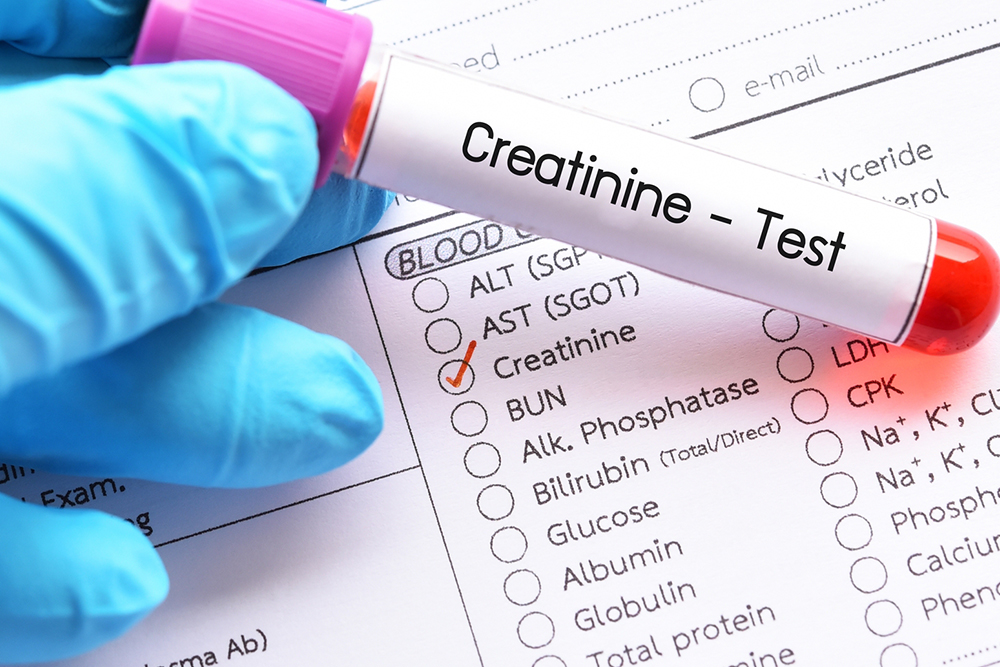How to Analyze a Creatinine Level Chart
Creatinine is a type of waste product removed from the blood by the kidneys. So, when creatinine levels in the blood are unusually high, it can indicate severe conditions, including kidney disease. That said, normal creatinine levels in the body can depend on various factors, including age and gender. Conducting a test and referring to a creatinine level chart can help individuals determine if their creatinine levels are high or normal.

How are creatinine levels checked?
There are two main ways to check if the creatinine levels in the body are normal or high. The first way is by checking the levels in the blood by a serum creatinine (blood) test. The second way is by testing the urine for creatine levels. Doctors may also perform both tests to compare the levels in blood and urine. This form of test is called creatinine clearance calculation.
Creatinine level charts
Understanding normal creatinine levels based on age and gender is important for evaluating kidney function. A creatinine chart provides reference ranges for different age groups and genders, allowing healthcare providers to analyze test results and identify any potential issues with kidney function.
1. Serum creatinine charts
These charts indicate the normal creatinine level in the blood using milligrams (mg) per deciliter (dL) as the unit. So, these charts can be helpful to doctors when checking blood test reports of a serum creatinine test.
Serum creatinine charts give a fair idea of the range of normal creatinine levels based on both age and gender. As per these charts, the normal creatinine levels in the blood of an adult male should be around 0.7 mg/dL to 1.3 mg/dL. Likewise, for an adult female, the normal creatinine levels in the blood should be around 0.6 mg/dL to 1.1 mg/dL.
2. Creatinine clearance charts
Unlike serum creatinine charts, a creatinine clearance chart provides a measure of how effectively the kidneys remove the muscle waste product over a specific time period. These charts are useful for doctors when evaluating the results of a creatinine clearance (urine) test. They display the measurement of creatinine clearance in milliliters of creatinine per minute per body surface area (mL/min/BSA).
The clearance charts can only be used to check the normal creatinine clearance values by age. For instance, as per these charts, adults between the ages of 18 and 29 should have a creatinine clearance in the range of 78 to 161 mL/min/BSA. Likewise, individuals between the ages of 30 and 39 should have creatinine clearance in the 72 to 154 mL/min/BSA range.
Importance of checking creatinine levels
One would first need to know about creatine to better understand creatinine levels. Creatine is a compound naturally found in the human body – particularly in the muscles and the brain. This compound is what provides energy to the muscles in the body. When this creatine is broken down or metabolized in the body, it produces a byproduct called creatinine, which is filtered out by the kidneys through urine. But despite that, one can still have some creatinine in their blood. When this amount becomes too high, it becomes a concern. As long as the kidneys function properly, they will be able to filter out creatinine, and one will not have high levels of it in one’s blood. This is why it is important to monitor the levels – especially when there is a doubt of kidney disease.
If the creatinine levels in the blood become unusually high, one may notice certain symptoms setting in. These include swelling in the hands and feet, dry and itchy skin, unexplained and extreme fatigue, loss of appetite, a change in the frequency of urination, and the urine being foamy or bloody. These are the symptoms of kidney disease; to confirm its diagnosis, the doctor may suggest a test.
Apart from that, there are also a few other reasons why a doctor may suggest taking a creatinine test.
- If one has already been diagnosed with kidney disease, a test to check creatinine levels may be suggested to check the progression of the disease. Besides that, it can also be done to test how well a certain treatment is working.
- Conditions such as diabetes and high blood pressure can also lead to kidney disease. This is why a healthcare professional may suggest such individuals take a creatinine test to check for kidney disease.
- A creatinine test can also be suggested to monitor the function of a transplanted kidney.
Normal levels of creatinine
Even when the kidneys are healthy and functioning properly, there will still be some level of creatinine in the blood. This level of creatinine depends on muscle mass. This is why it is common for normal creatinine levels to be slightly lower in females than males, as females generally have less muscle mass. That said, normal creatinine levels in the blood can also depend on age. Since kids do not have fully developed muscles, they might not have as much creatinine in their blood as adults. Similarly, as people lose muscle mass in their senior years, the levels in the blood can decrease.











